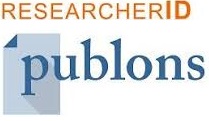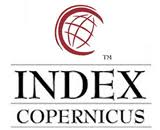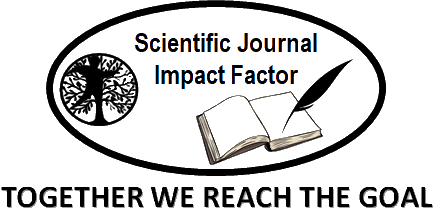Toxicity Assessment Of Terminalia Monoceros (Myrtales; Combretatceae), A Plant Used For Water Purification In The South Of Madagascar
Abstract
Terminalia monoceros, a plant endemic to Madagascar, is traditionally used to purify water in the Beloha Androy district. This study evaluates its acute and sub-acute toxicity in mice through clinical, biochemical and hematological analyses. Oral administration of doses between 50 and 5000 mg/kg for acute toxicity revealed no signs of toxicity or mortality, indicating low toxicity and precluding determination of a median lethal dose (LD50). For subacute toxicity, daily administration of 10 mg/kg for 30 days produced no significant changes in body weight or organs (heart, liver, spleen, kidneys), suggesting no adverse effects on growth and physiology. Biochemical (liver enzymes, renal function) and hematological (leukocyte count, hemoglobin, platelets) analyses revealed no abnormalities, ruling out any hepatotoxicity, nephrotoxicity or hematological toxicity. Terminalia monoceros extracts are therefore well tolerated, even at high doses, and show no obvious toxicity. These results reinforce their potential as a natural water treatment agent. However, further studies are still needed to further investigate their safety and efficacy, thus contributing to the valorization of medicinal plants in environmental and therapeutic applications.
Keywords
Full Text:
PDFReferences
. Kawamura M., Jayamana S. et Tsujiko Y. (1996), Relation between social and environnmental Conditions in Colombo Sri Lanka and the Urban Index Estimated, scientific research. https://www.scirp.org/reference/referencespapers?referenceid=2852536
. La banque mondiale, Madagascar : 220 millions de dollars pour améliorer l’accès à l’eau et à l’assainissement de base,
a. https://www.banquemondiale.org/fr/news/press release/2022/06/20/madagascar-220-million-to-improve-basic-water-and-sanitation services-and-sanitation-services-and supply.
. Fiessinger (1980). Les coagulation et floculation. Mécanisme d’agrégation structure et densité des flocs.
. Vaosolomalala Y. (2022), Kobahy, solution innovante pour le traitement des eaux insalubres, recherches pour le developpement, Série Sciences Biologiques N° 31, Antananarivo, Madagascar.
. Zazany Madagascar, l’eau, cette ressource épuissable à Madagascar, 2019, https://www.zazany-madagascar.com/zm-probleme-de-leau-a-madagascar.
. Bensakhria, A. (2018). Acute Toxicity. In General Toxicology (Chapter II, pp. 21-28).
. Miller, L. C. (1944). Estimation of the LD50 and its error by means of logarithmic-probit graph paper. Proceedings of the Society for Experimental Biology and Medicine, 57(3), 261-264.
. Ouedraogo, M. (2001). Toxicological evaluation of plant extracts: Methods and applications. African Journal of Traditional, Complementary and Alternative Medicines, 8(2), 123-135.
. Rosidah, Yam, M. F., Sadikun, A., & Asmawi, M. Z. (2009). Toxicology evaluation of medicinal plants: A review. Journal of Medicinal Plants Research, 3(2), 82-89.
. Klaassen, C. D., Amdur, M. O., & Doull, J. (2001). Casarett and Doull's Toxicology: The Basic Science of Poisons (6th ed.). McGraw-Hill.
. Chokshi, D. (2007). Metabolic disturbances in toxicology studies. Journal of Toxicology and Environmental Health, 70(12), 1025-1033.
. Tahraoui, A., El-Hilaly, J., Israili, Z. H., & Lyoussi, B. (2010). Acute and sub-chronic toxicity of Peganum harmala in rodents. Journal of Ethnopharmacology, 128(1), 194-199.
. Kluwe, W. M. (1981). Metabolic effects of toxic substances. Annual Review of Pharmacology and Toxicology, 21(1), 123-145.
. Lüllmann, H. (2008). Organ weight changes in toxicology studies. Toxicology Letters, 180(2), 85-92.
. Ozer, J., Ratner, M., Shaw, M., Bailey, W., & Schomaker, S. (2008). The current state of serum biomarkers of hepatotoxicity. Toxicology, 245(3), 194-205.
. Ramaiah, S. K. (2011). Preclinical safety assessment: Current gaps, challenges, and approaches in identifying translatable biomarkers of drug-induced liver injury. Clinics in Laboratory Medicine, 31(1), 161-172.
. Gowda, S., Desai, P. B., Kulkarni, S. S., Hull, V. V., Math, A. A., & Vernekar, S. N. (2010). Markers of renal function tests. North American Journal of Medical Sciences, 2(4), 170-173.
. Davis, J. W., Kramer, J. A., & Klaassen, C. D. (1994). Renal function in toxicology studies. Toxicology and Applied Pharmacology, 125(1), 1-6.
. Gregg, C. M., & Walser, M. (2000). Urea metabolism in toxicology. Journal of Toxicology and Clinical Toxicology, 38(3), 213-221.
DOI: http://dx.doi.org/10.52155/ijpsat.v50.1.7111
Refbacks
- There are currently no refbacks.
Copyright (c) 2025 Tahina Ernest RAJAONERA

This work is licensed under a Creative Commons Attribution 4.0 International License.



















